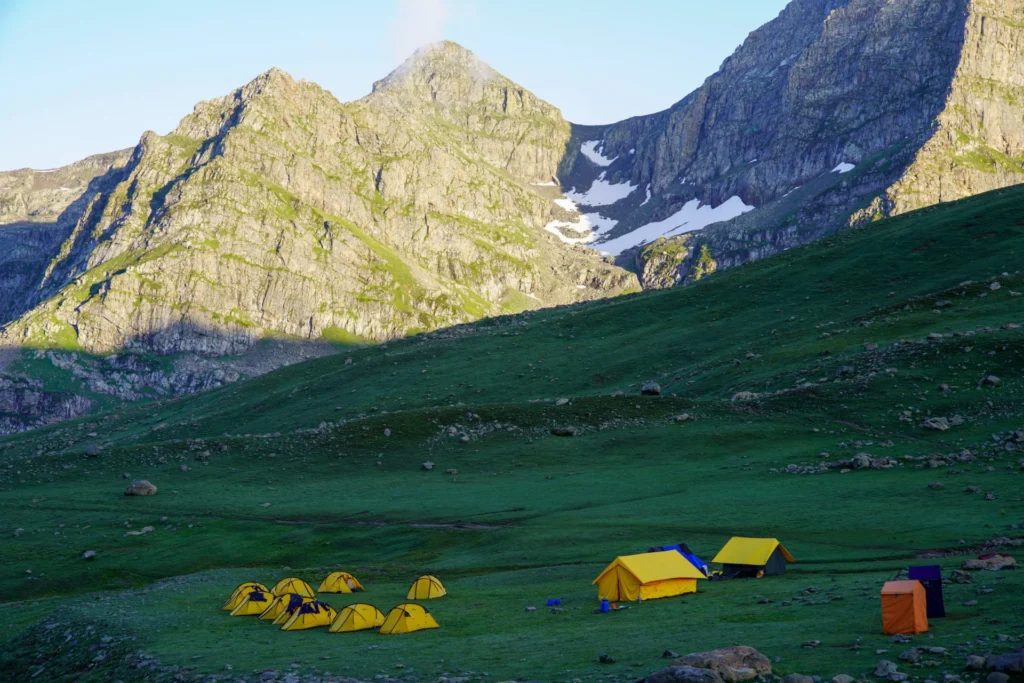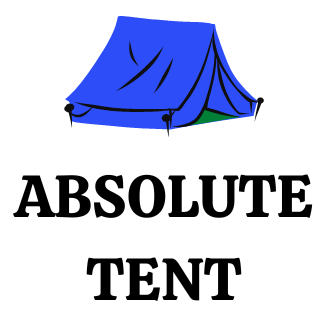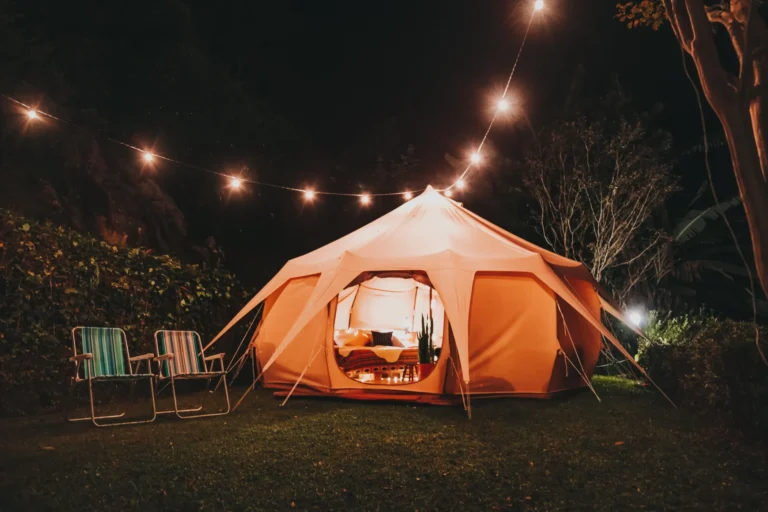Do you like camping or the outdoors? If so, you understand the necessity of a sturdy tent that can survive the weather. Tents’ resistance to high winds is a crucial feature for selection. But do you have any idea how much wind can a tent withstand? We will provide you with tips to secure your tent against severe winds. Let’s start.

When camping outside, you may encounter risks like strong winds. The wind is one of the most powerful force that may blow your tent away. The ability of a tent to withstand wind is just one situation. Tents require more than a membrane, guy lines, and stakes to function correctly, or your tent must be pitched appropriately in a secure location. A tent’s structure is also crucial to stability, especially in windy conditions. The article looks at the exciting topic of tent wind resistance.
Tent purchasing involves more than design. A tent’s structure and pitching affect its durability. Let me explain how wind speed is affected and how to pick the finest tent.
How Much Wind Can a Tent Withstand?
While you enjoy the great outdoors, tents will protect you from the wind, rain, and bugs. You must be wondering, though, how much wind can a tent withstand or how much yurt can a tent withstand or handle.
Most tents can resist gusts of up to 20 mph without the use of stakes. This potential accelerates to 40 mph with the help of stakes. Most tents on the market are not designed to withstand winds of more than 50 miles per hour.
In the United States, tents are tested to withstand winds of up to 17 miles per hour, or Beaufort Force 4. Most commercially available tents can resist winds up to 38 miles per hour, or 25 times the 7.5 baselines. Typically, conventional tents can withstand winds of up to 15 to 30 miles per hour.
Will My Tent Hold Up In 50-mph winds?
Most tents are made to withstand extremely gusty winds. However, 30 miles per hour or higher winds can cause significant damage. If you’re going camping, bringing some plastic bags and umbrellas is an intelligent choice. In addition, use plastic bags to safeguard your belongings before storing them in your backpack.
How much wind is too much for a tent to withstand?
According to the Beaufort Wind Scale, if the wind speed is greater than 40 miles per hour, it is considered a gale. Strong winds like this may make setting up and preserving a tent tedious. Therefore, more than 40 mph winds are deemed dangerous for a tent.
What Wind Speed Can Damage Tents?
Too much wind is especially hazardous to a tent, although wind generally is not ideal. If you’re going camping, check the forecast before you go. Ensure there are no low-pressure systems in the area you want to camp in. Camping in winds faster than 30 miles per hour is not a good idea.

How Should I Deal with Strong Winds?
Here are some things to keep in mind if you’re ever trapped in a windstorm while hiking or camping:
1) Choose a Windproof tent
To begin, pick a tent that can handle gusty conditions. Look for solid poles, reinforced seams, and a sleek design that reduces wind resistance. Choose ripstop nylon or polyester tents.
2) Select a suitable camping spot
Choose a good campsite or a wind-protected spot to pitch your tent. To reduce wind damage, seek shelter from trees, hills, or rocks. Avoid gusty open spaces.

3) Stake your tent Securely
In windy situations, your tent must be staked appropriately. Use robust tent poles or pegs long enough to grasp the ground. Add guy lines and tie them down to stabilize your tent.
4) Position your tent Camp strategically
Position your tent so the wind hits the narrowest side. This reduces the tent’s gust exposure and risk of collapse or damage. If the wind changes while camping, move the tent.
5) Reinforce Guy lines and Rainfly
Regularly check the tension of your tent’s guy lines and fasten them to the ground. Tighten them using knots or tensioners. Attach the rainfly appropriately for extra wind and rain protection.
6) Remove loose items around the tent
Before the wind blows, clear stray branches, stones, and camping gear from around your tent. Strong gusts can turn these into harmful shots, endangering your tent and safety.
7) Avoid severe winds
In strong winds, stay inside your tent until circumstances improve. Ventilate the tent to reduce moisture but cover the exits to prevent wind from destabilizing it.
8) Be prepared for emergencies
Carry additional guy lines, tent repair patches, and a mallet or hammer to fasten pegs. Wind damage may need this equipment.
9) Weather forecast
Check local weather forecasts before camping. Stay informed on high wind alerts. Knowing the predicted conditions lets you plan and prepare.
Extreme winds may make camping dangerous. If the weather prediction indicates frequent high winds or severe storms, postpone your vacation or choose a more robust wind-protection camping spot.
Your safety should always come first, even though a tent’s wind resistance is essential. If you feel unsafe in the wind, pack up and find cover.
Conclusion
Choosing the right tent for outdoor experiences is vital for safety and comfort. You must be conscious of how much wind can a tent withstand; a tent’s wind resistance depends on its materials, design, and construction. When choosing a tent, it’s essential to remember the expected wind speeds and weather conditions of your camping area. A high-quality, wind-resistant tent will give you peace of mind during a storm. Choose wisely and enjoy your outdoor trips!







